Research - Network Planning & Optimization

General Tasks
The request for wireless services, particularly for ubiquitous mobile internet access and multimedia connections, has drastically increased over the last years. Accordingly, the capacity of wireless networks needs to be continuously enhanced subject to a strictly limited available radio spectrum. To achieve this goal, accurate planning and deployment, continuouos optimization and efficient resource allocation are of tremendous importance. Sophisticated analytical models and methods from communications engineering, information technology, mathematics, optimization and computer science are combined to find solutions to the challenging problems.Planning, optimizing and operating a wireless network essentially follows the lines in the picture above. The Institute for Theoretical Information Technology contributes to the following topics.
- Radio Wave Propagation Prediction: Semi-empirical and Ray-optical Methods
- Network Planning & Optimization: Mathematical Optimization Models and Algorithms
- Efficient Resource Allocation on the Physical Link
Radio Wave Propagation Prediction
provides the data for subsequent wireless network planning, deployment and optimization. From a huge set of potential configurations the optimum, or near optimum one is selected. For any candidate base station configuration a precise radio wave propagation prediction is needed. This requires that the prediction is both accurate and fast. Computational speed is achieved by smart algorithm design and corresponding implementations. In order to be accurate, the algorithms use building data in urban scenarios, and land use information (e.g., village, field, forest, lake) in rural environments as input data. Different types of prediction methods and algorithms are used for both purposes.
Rural Field Strength Prediction - DiLaP
In a rural environment the DiLaP (Direction-specific Land use based Path loss) model uses land use information. To generate the input satellite image data are automatically classified by neural networks or by a sophisticated k-nearest-neighbor method.

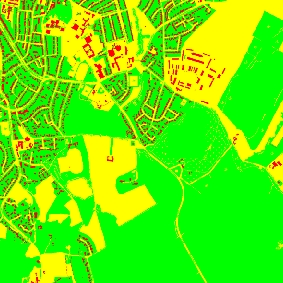
Prediction results for a typical rural area are shown in the pictures below. The left picture shows the comparison between predicted and measured data on a certain road through rural terrain. The right hand picture illustrates spatial path loss by colors, red refers to low, dark blue to high values.
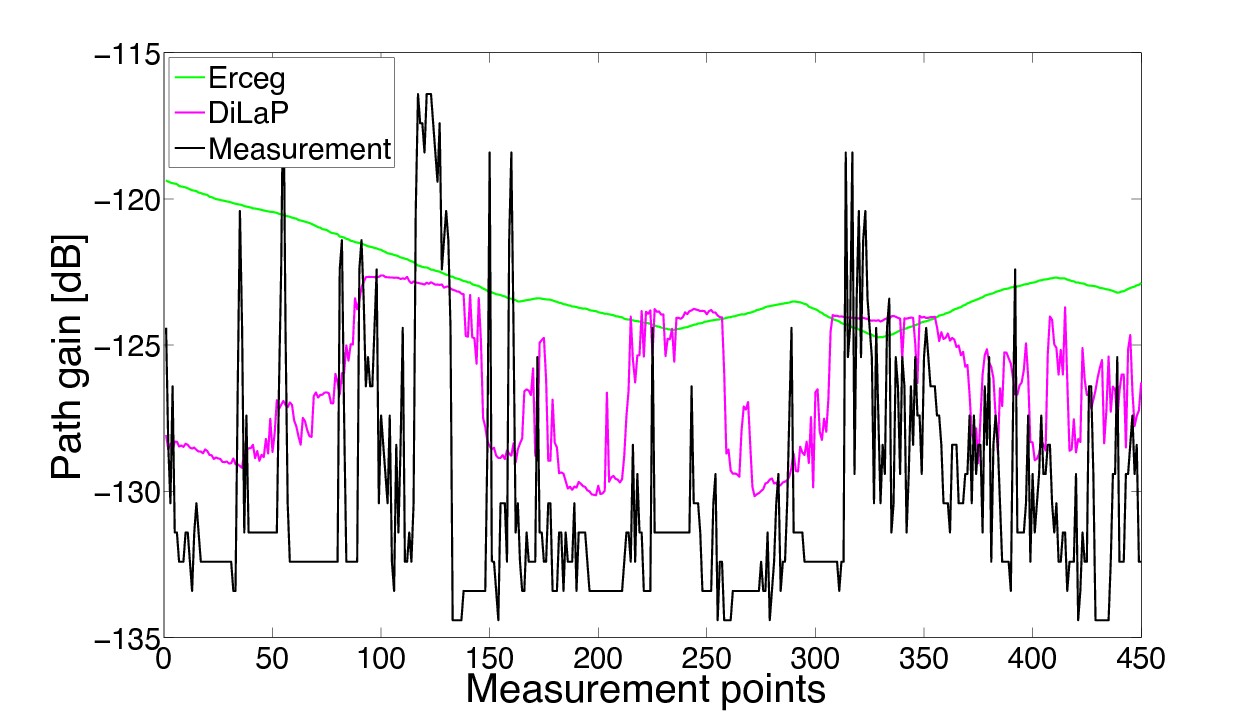

Urban Field Strength Prediction - CORLA
Due to the complicated multipath propagation in urban scenarios a computationally more demanding algorithm is is used: CORLA (Cube Oriented Ray Launching Algorithm). Here, ray-optical effects like reflection at walls and diffraction at buildings edges and roof tops are taken into account. Terrain heights, building data and 3D antenna patterns serve as input data to the field strength prediction.
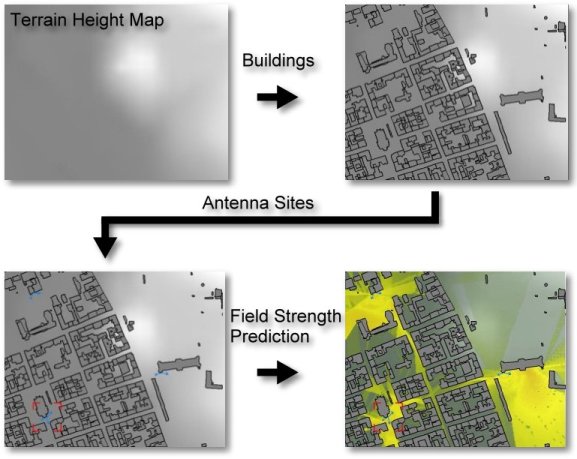
Its smart implementation allows for extremely fast prediction of path loss within a few seconds for an urban area about four square kilometers while still maintaining high accuracy. In a current project, CORLA will be accelerated by utilizing heterogeneous parallel hardware with incoherent memory, e.g., graphics cards and the CBEA, the Cell Broadband Engine Architecture, which is available in the Playstation 3. The pictures below show a color-encoded 3D radio wave propagation prediction by CORLA and a comparison of measured against predicted values.
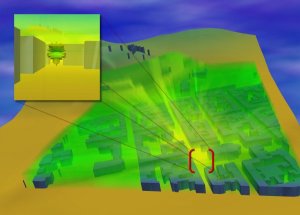
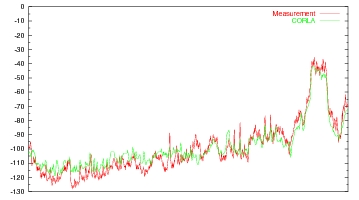
Network Planning & Optimization
Depending on relevant input parameters like field strength predictions for base station or network configuration candidates, a suitable mathematical optimization model is formulated. Generally, the objective function formalizes the desired goals and is minimized or maximized within the optimization process. Model constraints may be technologically, economically or environmentally motivated and serve together with the objective function as a network system model. Typical constraints arise from limited bandwidth, quality of service requirements or health risk prevention. The same methodology can be applied for planning a network ab initio as well as optimizing an existing network.For nearly all real instances the corresponding mixed Integer Linear Programs (ILP) are NP-hard. Sophisticated algorithms and heuristics are applied to find at least near-optimal solutions.
Ongoing research at TI focuses on planning and optimization of (cellular) relay networks that use OFDM transmission techniques, e.g. WiMAX IEEE 802.16j and LTE Advanced networks. In such networks, a user can be served directly by a base station or via a relay node that forwards data in between. For complexity reasons relaying is limited to a maximum of two hops from a base station to a user. Our models and solution processes are flexible enough to cover a wide range of technological, economical and environmental demands.
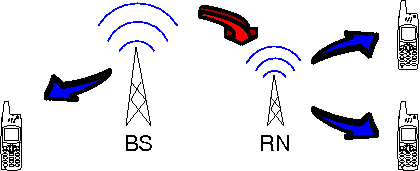
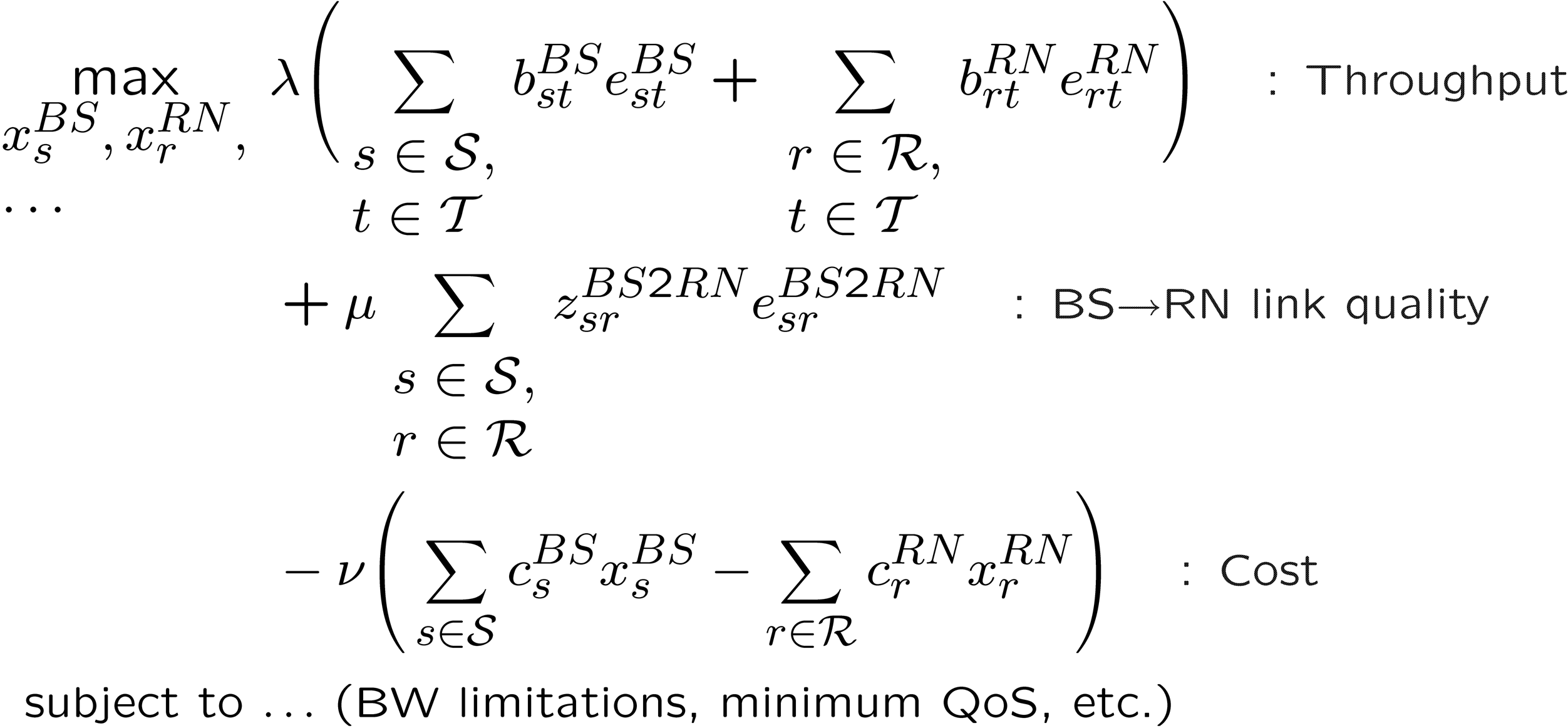
In the past many methods and algorithms have been developed at TI to tackle planning and optimization problems for GSM and UMTS cellular networks, respectively. For instance, this includes a fast algorithm to solve the Channel Assignment Problem (CAP) for GSM and efficient methods for planning and optimization of UMTS cellular networks with respect to the following criteria.
- Best Server
- Cell Dominance
- Soft Hand Over
- Coverage vs. Ec/Io Coverage
- Pilot Ec/Io Analysis
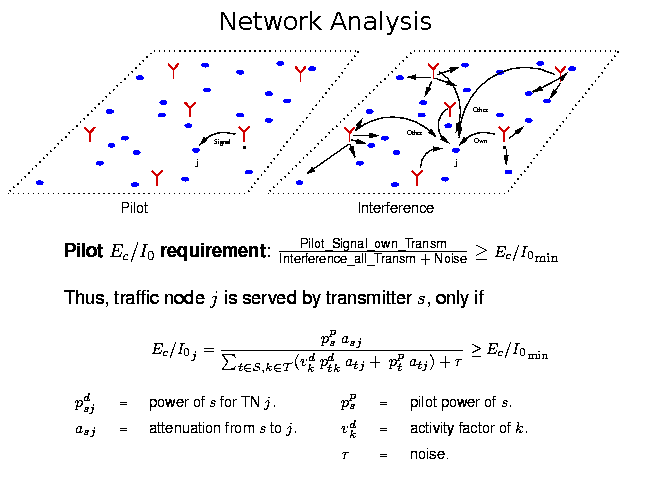
Efficient Resource Allocation on the Physical Link
The physical radio link itself is one of the most restricted resources in wireless networks. It is subject to noise and interference from other users. Hence, power and bandwidth must be allocated to maximize spectral efficiency. Furthermore, fairness between different users plays an important role. To achieve these goals, information theory and game theoretical and economorphic models are used, see Information Theory & Networks. OFDMA systems and optimal subcarrier allocation are the special focus of the Optimal Power and Rate Allocation for OFDMA group.Contact
For further information contact Alexander Engels or Michael Reyer.
***
Aktuelle Informationen gemäß Art. 13 DS-GVO:
Datenschutzhinweis ***
Impressum ***

